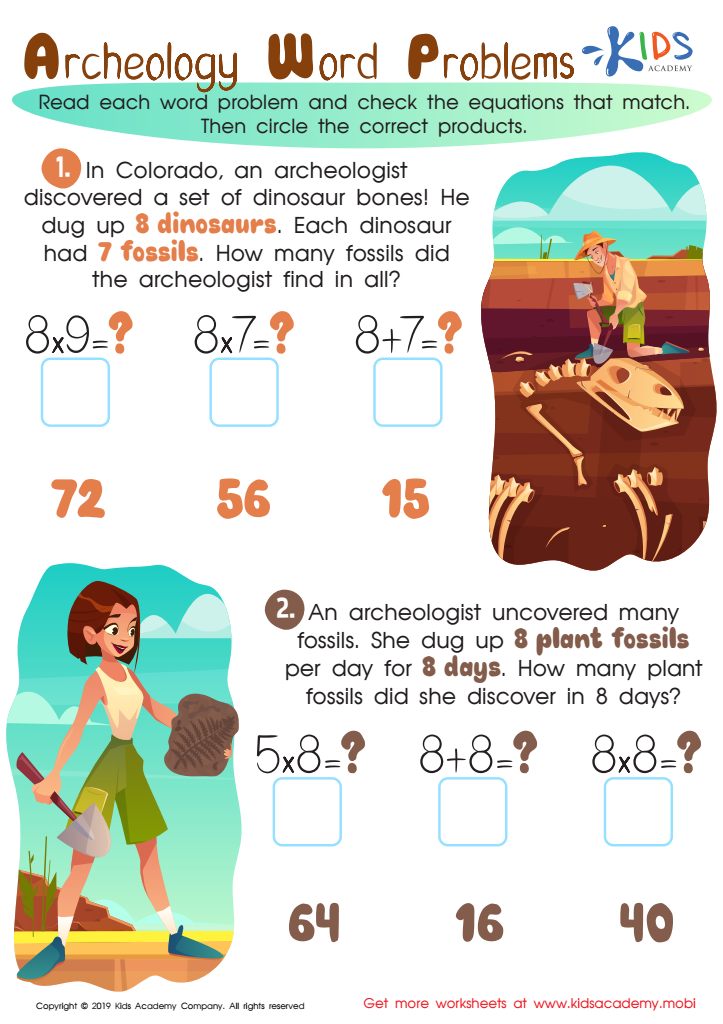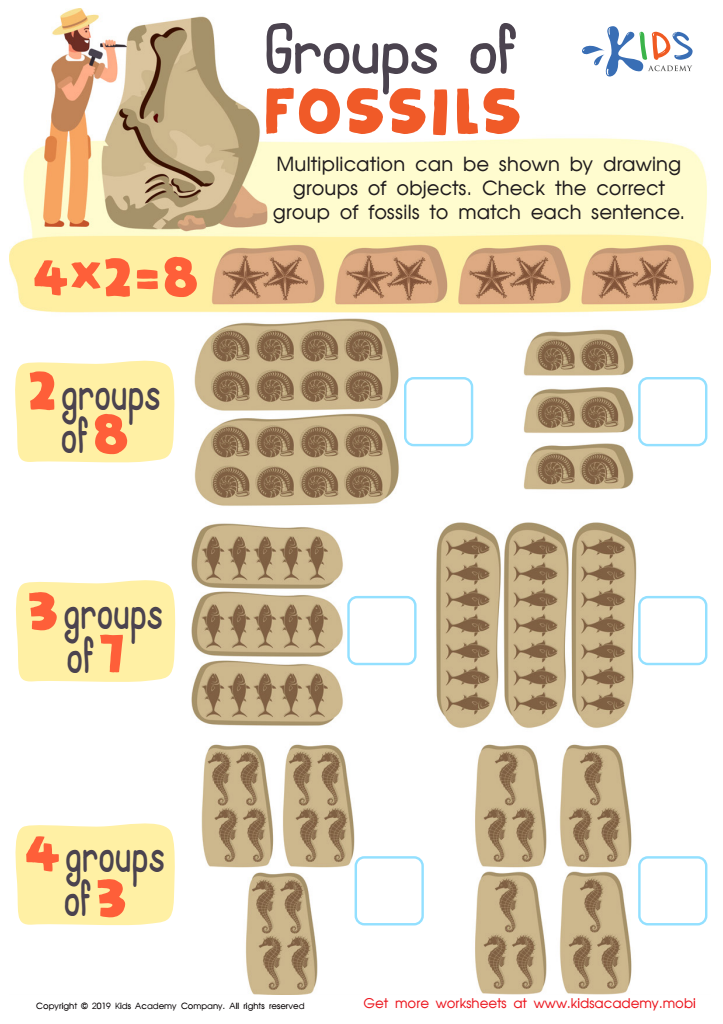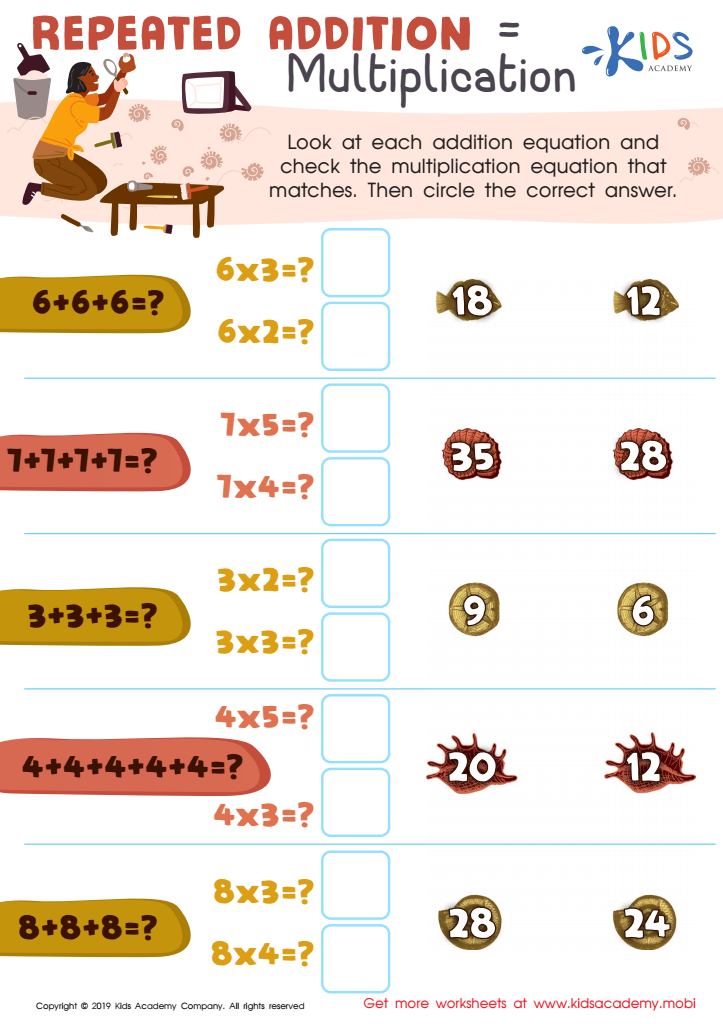Relating Addition to Multiplication - Lesson for Grade 3, Chapter - Multiplication Facts
In the lesson "Relating Addition to Multiplication," designed for Grade 3 students as part of the Multiplication Facts chapter within the Multiplication and Division unit, learners will embark on an exciting journey to understand the fundamental connection between addition and multiplication. Through engaging activities such as the Archeology Word Problems Worksheet, Groups of Fossils Worksheet, and the Repeated Addition = Multiplication Worksheet, students will apply their skills in practical scenarios that illustrate how multiplication is essentially repeated addition.
Understanding this relationship is crucial for several reasons. Firstly, it lays a solid foundation for mastering multiplication and division, vital components of mathematical literacy that are used in everyday situations and more complex mathematical concepts encountered in higher grades. Secondly, by using contexts like archeology and fossils, students learn to apply mathematical concepts in real-world situations, enhancing their problem-solving skills and making learning more relatable and enjoyable. This lesson not only strengthens their arithmetic skills but also fosters critical thinking and a deeper appreciation for the applications of math in various fields.
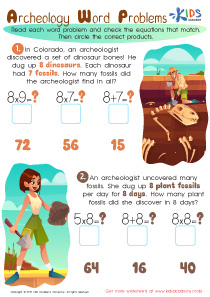
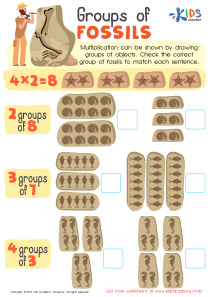
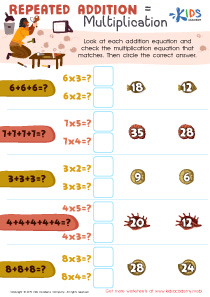
-
Activity 1 / Archeology Word Problems Worksheet
What does your child want to be when she grows up? Perhaps a doctor, an engineer, a teacher, or maybe even an archeologist. Do your kids know what archeologists do? You can introduce them to this profession with this simple worksheet. The archeologist in this picture has discovered a set of dinosaur bones. Read the short text to your kids and show them the accompanying pictures. Then, read each word problem and check the equations that match. Help your little ones circle the correct products.
-
Activity 2 / Groups of Fossils Worksheet
After your kids get past the hurdle of learning to add and subtract numbers correctly, their mathematical problems will still be far from over. The next stage for them is to learn their multiplications. The only way you can be sure that your kids soak up all you try to teach them is by using fun worksheets such as this one. Multiplication can be shown by drawing groups of objects. Help your kids check the correct group of fossils to match each sentence.
-
Activity 3 / Repeated Addition = Multiplication Worksheet
Addition, subtraction and multiplication all go hand in hand. As long as your child learns mathematics in school, they will have to thoroughly get through all these topics. Now, if they are having some difficulties understanding mathematics, the best thing to do is use worksheets such as this to help them get some more practice. Look at each addition equation in this printout, and check the multiplication equation that matches. Then, circle the correct answer.

